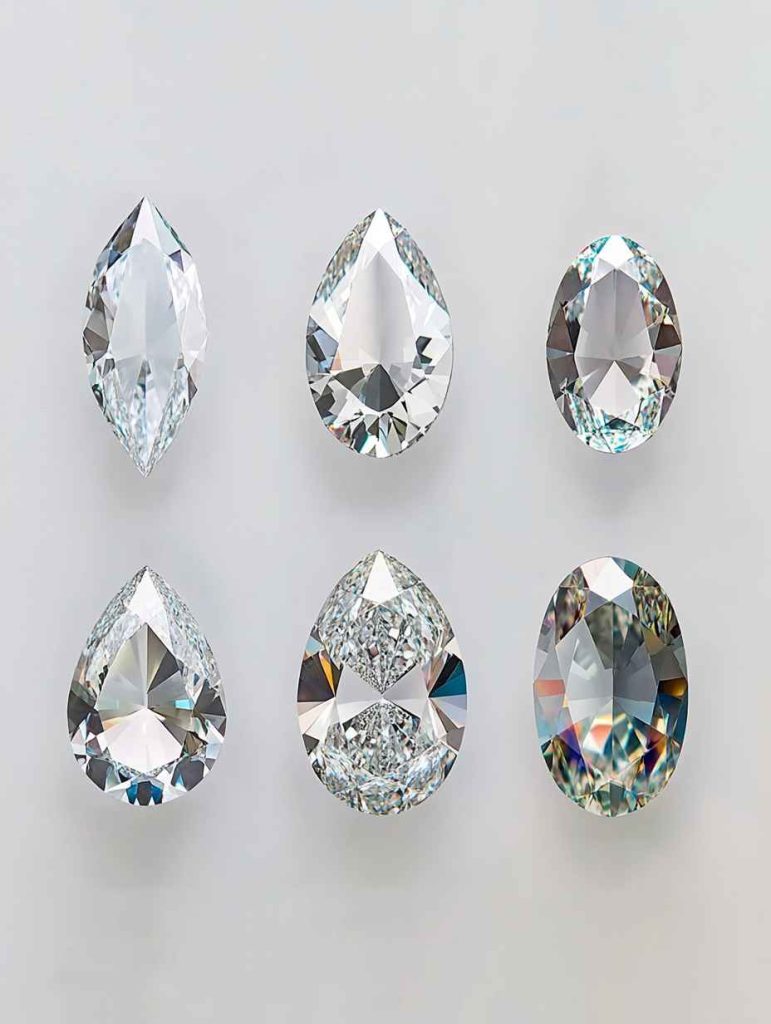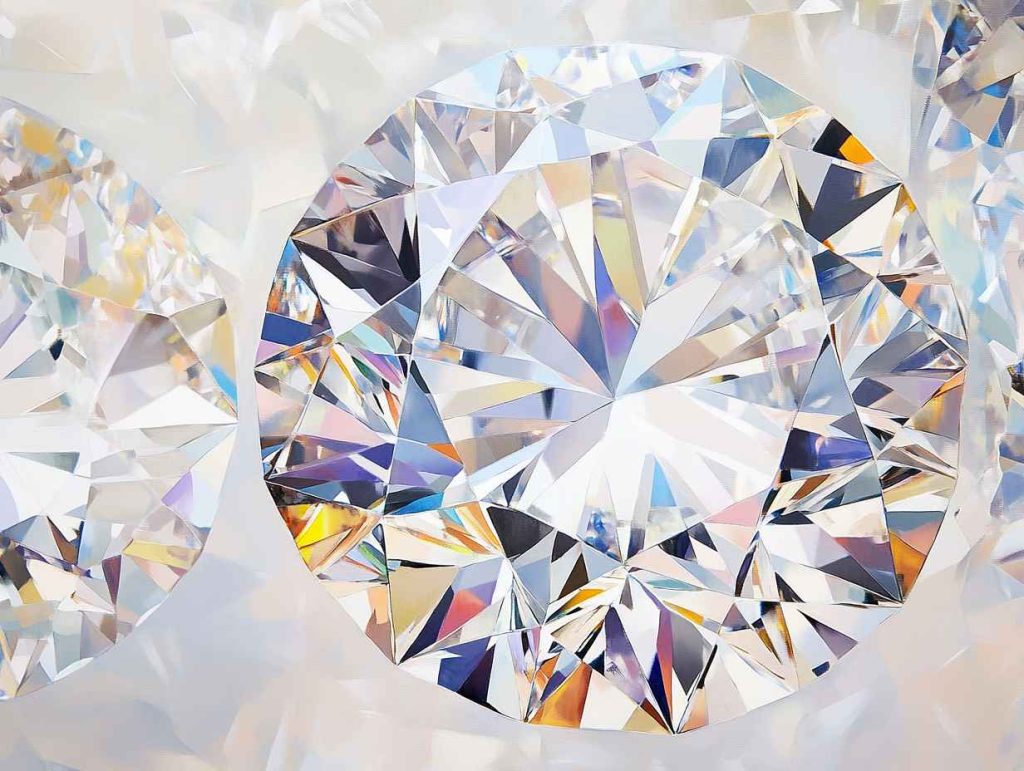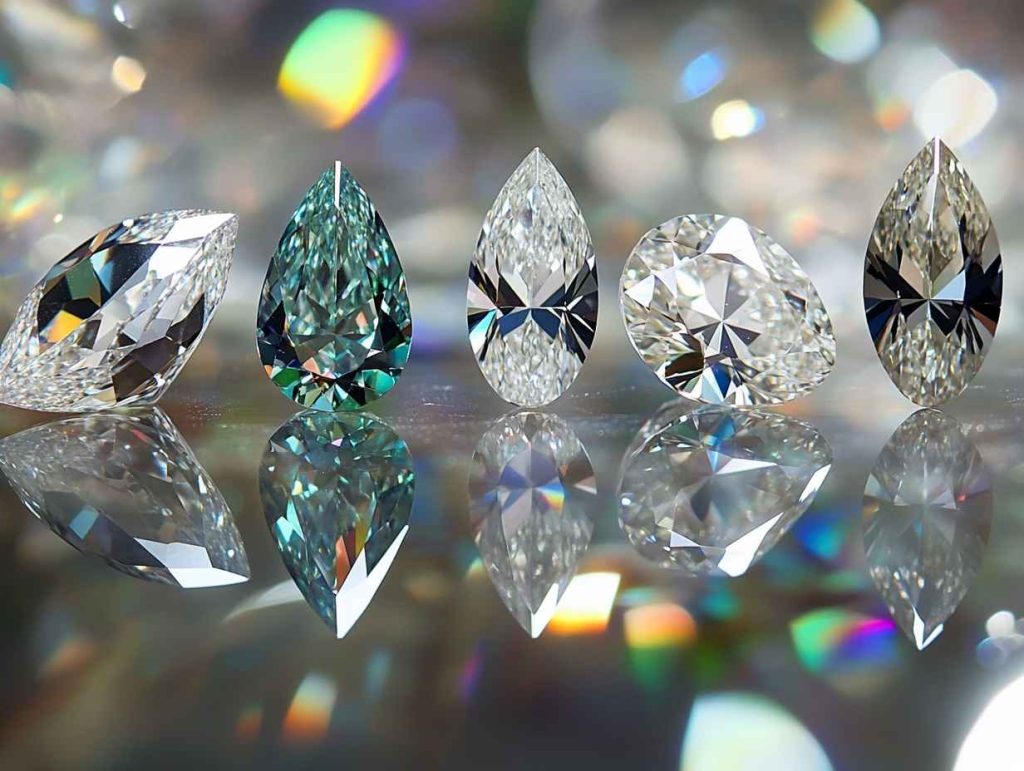Are you planning to buy a diamond and want it to look as big as possible? Whether it’s for a special gift, an engagement, or a milestone celebration, you’re probably asking, “Which diamond cut looks the biggest?”
You’re not alone! This guide will simplify your decision and help you choose a diamond cut that looks larger without stretching your budget. Let’s dive in!
Why Does Diamond Cut Matter?
The cut of a diamond does more than enhance its sparkle. It determines how large the diamond looks to the naked eye.
Two diamonds of the same carat weight can appear entirely different in size because of their cut. Understanding this can help you choose a dazzling diamond that looks bigger without costing more.
Top Diamond Cuts That Look Bigger
Not all diamond cuts are created equal. Here are the cuts that give the most visual impact for their carat weight.
1. Marquise Cut
- Shape: Long and narrow with pointed ends, like a football.
- Why It Looks Big: Its elongated shape spreads out the surface area, making it appear larger.
- Bonus: It makes fingers look longer and slimmer.
💎 Explore more timeless designs in our Engagement Ring Types guide.
2. Oval Cut
- Shape: An elongated round shape.
- Why It Looks Big: Its large surface area and brilliant facets create the illusion of size.
- Best For: A modern yet classic vibe.
3. Pear Cut
- Shape: A teardrop combining round and marquise cuts.
- Why It Looks Big: The pointed end and rounded base maximize perceived size.
- Tip: Wear it with the point facing your fingertip to elongate your hand.
💡 Curious about affordability? Check out How to Buy Diamond Stud Earrings.
4. Emerald Cut
- Shape: Rectangular with step cuts and a wide open table.
- Why It Looks Big: Its broad, flat top highlights size over sparkle.
- Tip: Choose a higher clarity grade, as imperfections are more visible.
5. Radiant Cut
- Shape: Square or rectangular with trimmed corners and brilliant facets.
- Why It Looks Big: It combines the shape of an emerald cut with the brilliance of a round cut.
- Best For: A balance of size and sparkle.
These different cuts determine the diamond’s shape and how it reflects light.
Which Diamond Cuts Look the Biggest?
Let’s explore which diamond cuts look larger compared to others.
1. Marquise Cut
- Appearance: Long and narrow with pointed ends, resembling a football.
- Why It Looks Big: The elongated shape maximizes the surface area, making it appear larger.
- Tip: The marquise cut can make fingers look longer and slimmer.
2. Oval Cut
- Appearance: An elongated round shape.
- Why It Looks Big: The oval cut has a larger surface area on the top, giving the illusion of a bigger diamond.
- Tip: It combines the brilliance of the round cut with a larger appearance.
3. Pear Cut
- Appearance: A teardrop shape, combining round and marquise cuts.
- Why It Looks Big: The elongated shape and pointed end make it look larger.
- Tip: Worn with the point facing the fingertip, it elongates the look of the finger.
4. Emerald Cut
- Appearance: Rectangular with step cuts and a large open table.
- Why It Looks Big: The broad, flat surface area on top makes it appear larger.
- Tip: Highlights the clarity of the diamond; choose a higher clarity grade.
5. Radiant Cut
- Appearance: Square or rectangular with trimmed corners and brilliant facets.
- Why It Looks Big: Combines the shape of the emerald cut with the sparkle of the round cut.
- Tip: Offers a balance between size appearance and brilliance.
How Surface Area Affects Perceived Size
A diamond’s surface area (visible from above) plays a significant role in how big it looks.
| Diamond Shape | Length x Width (mm) | Surface Area (mm²) |
|---|---|---|
| Marquise | 10.5 x 5.25 | 41.0 |
| Oval | 8.2 x 5.4 | 40.6 |
| Pear | 9.0 x 5.5 | 39.5 |
| Emerald | 7.5 x 5.5 | 41.3 |
| Round | 6.5 x 6.5 | 33.2 |
💡 See how different shapes impact size in our guide on How to Tell a Good Diamond.
Other Factors That Make Diamonds Look Bigger
It’s not just about the cut! These factors can also enhance size perception:
1. Shallow Depth
- What It Is: A shallower diamond has more surface area.
- Tip: Avoid diamonds that are too shallow; they may lose brilliance.
2. Thin Girdle
- What It Is: The edge of the diamond.
- Why It Matters: A thinner girdle creates a larger-looking table (top surface).
3. Setting Style
- Halo Setting: Surrounds the center stone with smaller diamonds, amplifying size.
- Thin Band: A slim band directs attention to the diamond.
💎 Learn about settings that enhance diamond size in our Choose Engagement Ring guide.
Tips for Choosing a Bigger-Looking Diamond
- Pick Elongated Shapes
- Why: Shapes like marquise, oval, and emerald appear larger.
- Opt for a Halo Setting
- Why: The surrounding stones create the illusion of a larger diamond.
- Consider Lab-Grown Diamonds
- Why: They cost less, allowing you to choose a bigger size.
- What to Know: Lab diamonds have the same brilliance as mined diamonds.
- Select the Right Metal
- Tip: White metals like platinum or white gold reflect the diamond, enhancing its size.
Balancing Size and Quality
Bigger isn’t always better. A well-cut diamond sparkles more, regardless of its size.
- Prioritize Cut: A poorly cut diamond will look dull.
- Check Clarity: Ensure the diamond is eye-clean.
- Choose Certification: Look for diamonds certified by GIA or IGI.
💡 Want more guidance? Read 1 Carat Diamond Ring for in-depth tips.
Common Questions About Diamond Cuts
Q: Do larger-looking cuts cost more?
A: Not always. Cuts like oval and marquise can look bigger without a higher price tag.
Q: What’s more important—size or quality?
A: It’s personal. Balancing size with cut and clarity often offers the best value.
Q: Can I make a smaller diamond look bigger?
A: Yes! Use settings like halos and choose slim bands to amplify its size.
Final Thoughts
So, which diamond cut looks biggest? Cuts like marquise, oval, pear, and emerald stand out because of their elongated shapes and larger surface areas.
Key Takeaways:
- Shape Matters: Elongated cuts maximize perceived size.
- Settings Enhance: Use halos and slim bands to make your diamond shine.
- Balance Is Key: Don’t compromise quality for size—find the perfect balance!
✨ Ready to find the ideal diamond? Start exploring today!


